Creating a perfectly engaging blog can be a real challenge. You have to contend with billion bytes of information and the short attention spans of readers. Crafting something your audience will enjoy and want more of may seem like trying to be heard in the back row of a rock concert. But there are ways to stand out above the rest.
Use the proven guidelines below to increase content engagement on your blog and build a powerful reader base.
1. Know Who You Are Writing for and How You Can Help Them
Knowing your target audience is critical for engagement. Your blog has to serve a purpose to your readers. So provide information that can help them solve their problems.
The best way to get to know your audience is by creating a marketing persona. This tool allows you to see your readers’:
- Values
- Who they are
- Where they work
- Their interests
- Other demographic information.
Knowing these facts lets you write in response to their needs.
For example, TechCrunch posts on all things technology to attract the attention of those in the startup technology space.
Here’s how to create a great persona:
- Learn from these examples beforehand.
- Use software such as Google Analytics or Clicky to get basic information.
- Build several profiles of your average readers. Include what their needs are and how they access information (mobile or not).
2. Create a User Experience Readers Will Want to Come Back to
Your audience will only engage with your content because it is helpful to them. Part of that is because they had a good experience on your blog. In turn UX, or User Experience, is a huge factor in making actionable content.
According to UX consultant Jozef Toth, 88% of online consumers are less likely to return to a site after a bad experience. What makes for a bad experience?
- Having to scroll incessantly
- Showing content which has little relevance to the reader
But a great user experience means readers will stay on your blog longer and will keep coming back.
Try these tips for enhancing your page’s UX:
- Replace ads which aren’t helping your website traffic or supplying you revenue.
- Make your blog more aesthetically pleasing (poor visuals can contribute to poor UX).
- Make the purpose of your blog clear.
3. Create Content So People Will Want to Share It
Of course, great content is the heart and soul of your blog, but what defines quality content?
Your blog should offer unique insight into the issue it addresses or the problem it solves. Your goal should be to become the authority on your topic.
Here are some key characteristics your writing should have, as explained by Kissmetrics:
- Write something unique.
- Make your content actionable (i.e. compel them to do something about what they’ve read).
- Offer the best answers to questions.
- Be accurate in your information and statistics.
- Tell a good story and leave readers asking questions.
- Be concise.
- Always update your content.
4. Craft Magnetic Headlines
It is not possible to understate the importance of headlines — they make or break your blog. Consider headlines that draw readers in to your content. With so much information available, competition for your audience’s attention is fierce. Mashable does a great job of creating great headlines.
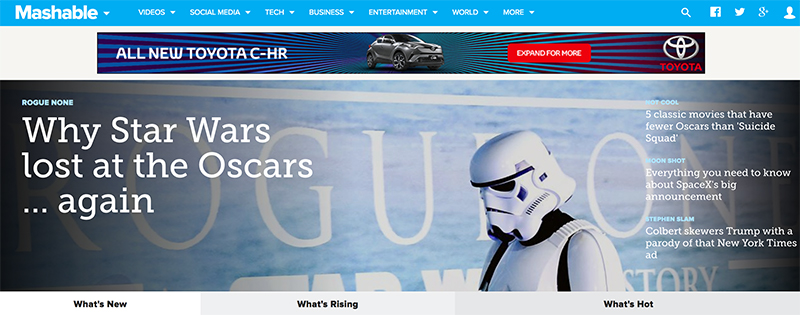 Studies show two important headline factors:
Studies show two important headline factors:
- 80% of readers never make it past the headline to your content
- Traffic can fluctuate as much as 500% based on the headlines you use
Make the most of your headlines with a few well-honed techniques. Techniques that allow you to create intrigue and draw in your readers. You also need to ensure your article delivers on what the headlines promise.
Marketing experts Neil Patel and Joseph Putnam have helped simplify the techniques. They have broken the techniques down into a few simple guidelines called the Four U’s:
- Make your headline unique.
- Make your headline ultra-specific.
- Make your headline convey a sense of urgency.
- Make your headline useful.
5. Craft Intriguing Introductions
Few people make it past the headline (only 20%). So every word of your introduction must compel your audience to read further. Your introduction should have a great hook which draws in readers. Consider this article from the BBC, for example:
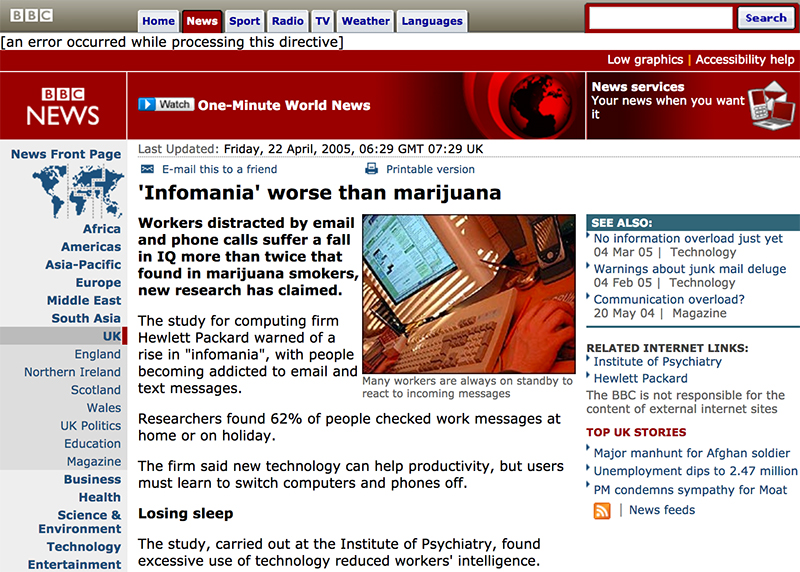
Your writing must convince readers that it is worth their time to read on. There are many methods you can use. For example, blogger Julie Neidlinger offers excellent advice on this front:
- Begin with a fascinating fact that isn’t well-known or often-used in your niche.
- Tell the end of the story in a way that compels readers to ask why.
- Use a short anecdote. Neidlinger’s example is fantastic — “I once wrote a newspaper story that killed a man.”
- Ask a question worth knowing the answer to.
- Write a cliffhanger, like one of Robert Bruce’s unusually short stories.
- Gently confront.
6. Go Beyond Words
You know your content should inform readers by:
- Answering their questions
- Solving their problems
But, chances are that they’re most likely paying more attention to the visuals on your page.
This should be no surprise. Consider this:
- 90% of the information your brain processes is visual.
- The fact that 40% of people will respond better to visuals than words.
So you see, the importance of visual media can’t be understated.
The Guardian is an example of a site that makes great use of visual media:
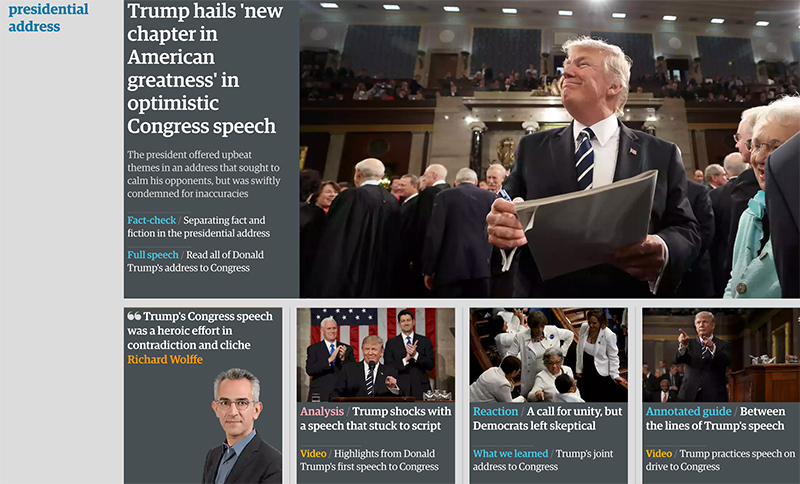
Visual content can take many different forms:
- The aesthetic appeal and format of your blog.
- An opening image that encapsulates the headline.
- Pictures which support content headings.
- Statistics supported with bar graphs and charts to help readers understand complicated information.
- Videos that add knowledge or humor (and keep viewers on your page 100% longer).
7. Mention Experts and Influencers in Your Content
Gaining credibility with your readers is important. Especially if you are trying to become an expert in your niche. According to one Traackr study, only 3% of people produce 90% of the impact online. Enter influencer marketing.
Influencer marketing taps into the power of that 3%.
How?
By using their prowess and status as experts and contributors. This lends credibility and legitimacy to your marketing efforts. In other words, it will make your content more valuable. It functions like the blurb or foreword from a bestselling author for a fledgling book.
Forbes does a great job of mentioning experts and leveraging influencers. This post is an example.
Hubspot mentions some great ways to use experts and influencers to your advantage:
- Mention their Twitter handle. They may retweet you.
- Include them in a list of experts. Appeal to their egos.
- Ask them to contribute. They may do a guest post.
- Quote them. This adds credibility.
- Get them to attend an AMA (Ask Me Anything).
- Show them a beta of your content and have them share a testimonial.
8. Write About Newsworthy Topics and Emerging Trends
Staying on the cutting edge of emerging trends isn’t always easy. But it’s the best way to ensure your readers will keep coming back for more.
Sites like Upworthy and Gizmodo understand this and utilize this on their sites.
Knowing the best resources for newsworthy topics will be your key to staying on top. Here are a few great ones:
- Buzzsumo: This site allows you to analyze what content performs best, for any topic.
- Quora: Much like Yahoo Answers, Quora lets you see all trending questions out there in any category.
- Google Trends: This Google tool lets you analyze all sorts of popular trends with data to back it up.
9. Publish Content as Often as Your Audience Can Consume It
Wait too long to post, and your audience gets bored. Post too often and your audience doesn’t have time to take it all in, and traffic and comments on each post drop. You’ll have to find a balance for what works in your niche.
Lifehacker, for example, publishes a few posts a day while Backlinko publishes a post once a month.
Here are a few tips as suggested by blogger George Stenitzer:
- Make and keep appointments with your readers.
- Find a good rhythm and sustain it.
- Use all the analytics you can.
10. Offer a Lead Magnet or Content Upgrade for Free
It is difficult to get readers to share their email or contact information with you. To do so you need to entice them with an offer they can’t refuse. This offer is known as a lead magnet or free content upgrade.
If you’ve used the internet for longer than two days, then you’ve seen your fair share of lead magnets.
The lead magnet available on this this post on Easil is an example.
The advantage in using lead magnets lies in being able to:
- Build relationships with your audience
- Growing your email list
The larger your email list becomes, the easier it will be for you to promote any new content that you publish.
The following are a few popular examples of lead magnets:
- Use a lead capture tool.
- Offer a free trial of your service or product.
- Create a video series that will have readers coming back for more.
11. Ask
If you want a more interactive blog, ask questions from your readers. It’s as simple as saying, “Hey guys, we at (your blog/business) value your input. Please feel free to share any thoughts or comments you have with us.”
Sonia Simone from Copyblogger does something similar in this post.
Tailor your reader engagement approach to suit your style and personality. But, by no means be afraid of sounding desperate by doing so.
The following are a few ways to ask questions or ask for engagement:
- Have you published a recipe or instructions on how to make something? If so, ask your readers to share pictures of their completed meal or project with you.
- Have you have published a blog on a controversial matter? If so, ask your readers to weigh in on the subject.
- At the end of each blog, you can ask your readers to comment on what they would like to read from you next.
12. Respond to Comments
One of the best ways to encourage reader engagement is to respond to your readers. You may choose to respond to your reader’s emails, but it is also important to respond to your readers’ comments. Check this resource on Blog Marketing Academy on how to respond to blog comments.
Readers who see that the writer engages and responds are more likely to engage more. This helps build a loyal readership.
Why?
Because it lets your audience know that they are are being heard and valued.
Here are some tips to responding to comments:
- Always maintain a professional and friendly voice.
- Take the time to respond to most, if not all, of your blog’s comments.
- Never ignore frequent commenters, even if you find them irritating.
13. Comment on Other Blogs in Your Industry
It is also important to interact with other blogs in your industry. This way you get to remain relevant and to build up your reputation with those audiences. The only way you or your site will start to get noticed is if you engage with others on the internet like I did on this post:
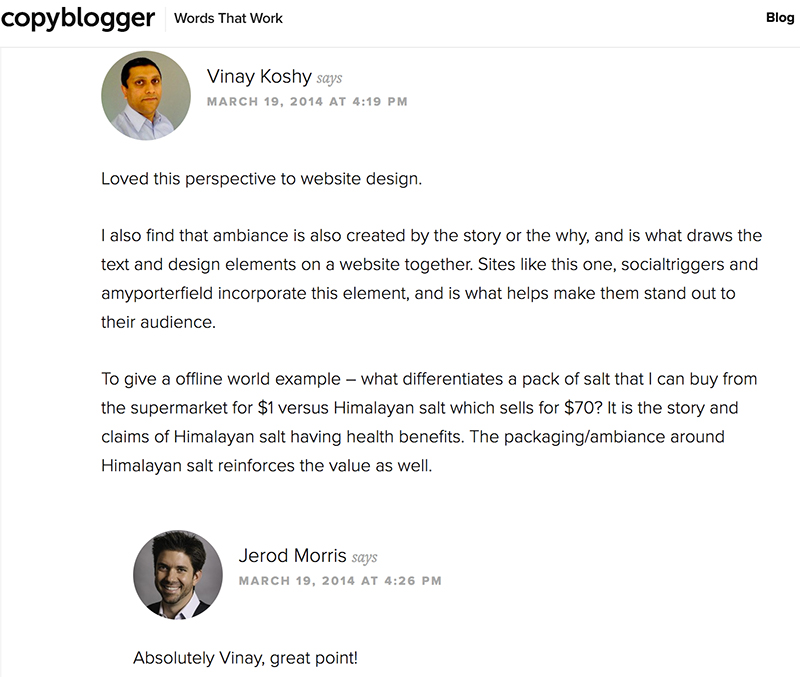
Commenting on other blogs may help promote those websites. But it will also help you to build meaningful relationships and to network. The writers of the content you engage with may even return the favor.
Here are a few ways to get the most out of commenting on other blogs:
- Comment on blogs that bring you the most value.
- Engage the writer in your comments, along with other commenters.
- Reference your own content in the comments when it is related to the bloggers’ content.
14. Build Your Online Presence
Promoting your name and brand is as important as promoting your content. The more weight your name carries, the more weight your content will have as well. Readers like to frequent content that is written by a name they recognize or know well.
Take this post for example. Sue Anne Dunlevi provides a list of bloggers using Twitter to engage their audience.
Every prominent writer has had to start with little or no audience. They built their audience by engaging their initial readers and other relevant communities.
Follow these tips to build your presence:
- Join social media platforms relevant to your audience and become active on them.
- Engage audiences similar to yours on social media.
- Follow and interact with leaders in your industry.
15. Contribute to Other Blogs Which Have a Similar Engaged Audience
A great way to build and promote your website’s readership is by contributing to other blogs. Especially blogs with a similar engaged audience as yours. It can be difficult to build a reputation for yourself when you only write for yourself. You can get around this by guest writing content that is like your own.
You may have noticed that many websites feature a variety of writers. Many of them are featured as guest contributors. These websites stand to gain from talented guest writers. How?
- By adding their expertise
- Adding depth to their content
- Building authority and their audience
Start your way to guest writing by following these tips:
- Become an expert in your field.
- Build credibility for yourself.
- Look for blogs relevant to your expertise.
- Search for sites that feature guest writers or bloggers and offer them your talents.
16. Promote Your Content
There is a lot of competition for content views on the internet. One of the best ways to compete with hordes of other content producers is to promote your content. There are various ways to do this, but the approach may vary based on the site and brand.
Great content without good content marketing is pointless. There are a plethora of resources that provide information on how to market your content.
Use the following ways to get started with promoting your content:
- Follow industry leaders that are relevant to the content you publish.
- Feature credible leaders in your content, and then share it with them.
- Use the proven techniques we have covered in this post.
17. Back Up Your Content With Data
There is a lot of information floating around on the internet, and unless it is linked to credible sources or backed up by data, it isn’t worth a dime. Having credible content is essential to building a large following of readers.
Buzzsumo did this in a post where they looked at what content gained traction on Medium.
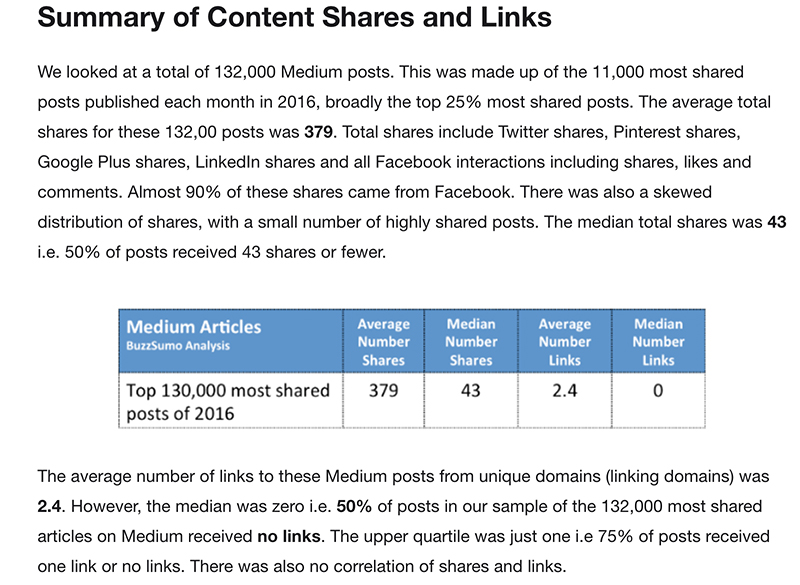
To build credibility, publish content that is supported by reputable sources or data. Your audience should have confidence in the veracity of your website’s content. They are then likely to share it with others or take the information to heart.
Follow these steps to start building content credibility:
- Always cite your sources. Publish content with at least a few hyperlinks that support your claims.
- Acknowledge and correct any mistakes or misinformation in your published content.
- Don’t write misleading titles. Credible content sums up what a viewer will read in the title.
18. Include Something in Your Content That Others Haven’t
What will set you apart is having original content that readers can’t find elsewhere. This will need some thoughtful, research-intensive work on your part. But the payoff will make it worth your time.
According to Zach Bulygo, Google penalizes websites that offer duplicate content. They also reward high quality, original content.
So in your website’s best interest put in a little extra work to produce content that your audience will value. Content that will not only boost your site’s rankings, but attract more readers as well.
Here are some tips for writing original content:
- Don’t outsource your content to be written. Do it yourself.
- Don’t write about something that everyone else has unless you have a new angle.
- Write content that provides actionable advice or information for your readers.
- Provide sources for all your content to build credibility and confidence.
The Onion is an example of a blog that always publishes completely original articles.
How About You?
Creating content that will turn your blog into a success is easier said than done. It takes a lot of time and hard work to produce quality content. But this is the main ingredient to a successful website.
There is no one recipe for success. No website that engages their audience uses a one-size-fits-all approach. Instead use the data-driven tips in this post. They’ll get on the right path to creating a successful blog with great content.
Image Credits
Featured Image: Melpomene/DepositPhotos
Screenshots by Vinay Koshy. Taken March 2017.





